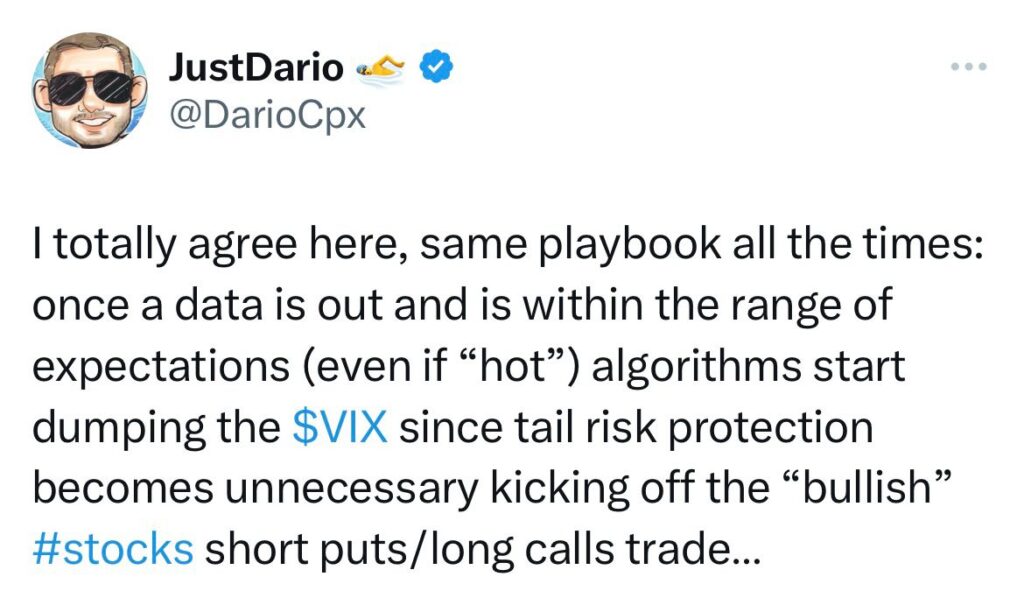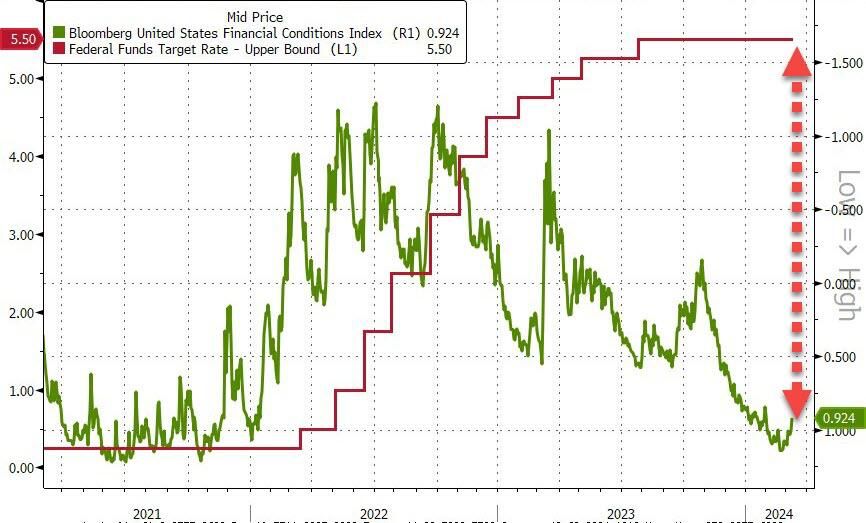What a clown show the US market has become. Please forgive me, but I cannot find any better words to describe it.
Before the US #CPI came out, I wrote these words: “Once data is out and is within the range of expectations (even if “hot”), algorithms start dumping the $VIX since tail risk protection becomes unnecessary, kicking off the “bullish” #stocks short puts/long calls trade…”. Isn’t this exactly what happened, even in the exact same sequence?

If Mr. Market was still in charge, the rational reaction to the US CPI would have been a sharp decrease in #stocks, along with an increase in yields and a strengthening of the $USD as a consequence. However, all this lasted for a fraction of a second and then we saw the complete opposite happening. Why? Because Mr. Derivatives is now fully in charge.
Let me say it again, DERIVATIVES ARE A ZERO SUM GAME. They are supposed to be a tool to transfer and manage risk from one market participant to another, not one to build leverage and increase a portfolio’s risk profile. When someone is profiting on a derivative transaction, someone else somewhere is losing the same amount of money, like it or not. The fact that the market has become extremely complex, widespread, and populated by any sort of player (from Hedge Fund’s wizards to Uber taxi drivers trading options on Robinhood) still doesn’t change the math. What it might have changed today, thanks to Jerome Burns and his fellow reckless central bankers colleagues, is that losses take much longer to surface. Why? Because they are helping those in trouble to conceal their losses, actively working to keep asset prices inflated. What the modern central bankers achieved, exploiting all the Dark Side Powers the Fiat Monetary System could offer, was the equivalent of keeping one foot in 2 shoes:
- Hike rates “aggressively” to make everyone believe they really took their #inflation mandate seriously.
- Loosen financial conditions at the same time to make sure the assets bubble could survive the rate hike cycle and not burst as happened every single time before.
All can be visualized in the chart below (credit to ZH).

How does maintaining asset prices artificially inflated impact the derivatives market? Quite simply, if no one believes asset prices can go down anymore, what’s the point of hedging the risk of them doing so? Follow me here:
1 – Derivatives were invented to transfer risk between 2 counterparts and at the very beginning, this was done without costs.
2 – Derivatives counterparts couldn’t easily find each other though, so Investment Banks saw the opportunity to become intermediaries for a fee. So far, still no problem.
3 – Investment banks couldn’t find a counterpart all the times to match the derivatives transaction, so rather than letting the business go (and the related fee), they started to become THE counterpart of the trade with the intention to offload the risk later on.
4 – What happens if investment banks cannot find an exact match for their derivatives contract they bought? They came up with another brilliant idea: synthetically reproduce the opposite risk by using a mix of other derivatives and the underlying itself.
5 – What’s the Achilles heel of point 4? That if you hedge all your risks in this way, you will end up losing money in your books because of the higher costs entailed in trading and managing a more complex (and often illiquid) book. At this point, banks have another great idea: some risks will be “hedged” by our shareholders’ capital.
At this point, we should be able to answer this question: “What happens to the market structure if, because of central bank policies, everyone becomes convinced asset prices will never go down again hence it becomes pointless to hold any downside hedging?”
- Intermediaries like banks will not stop their business in the derivatives market even if, logically speaking, there is nothing to intermediate at this point. They will carry on, but because all the risk is skewed on the #bullish side, all they are left with in managing their risk of delivering #bullish derivatives like call options is to buy the underlying (aka delta hedging). What about other non-delta-like risks that you can only hedge with other derivatives (now hard to find)? Banks managed to convince the regulator that those residual ones can be “hedged” with their capital.
- Price discovery in the derivatives market, and consequently in the underlying one, ceases to exist.
- Everyone is sitting on the same side of a boat that sooner or later will start tilting and come close to capsizing if something isn’t done to rebalance the whole market structure (putting back Mr. Market in charge).
As if what I said wasn’t enough, derivatives do carry an insane amount of leverage by itself that at this stage stands on top of an insane amount of debt in the system. In some extreme cases, leverage made its way into derivatives, creating a risk monster that you can only keep under control if it is asleep. What happens if something wakes that up? No, 1987 isn’t a good example anymore. What’s coming sooner or later is going to make that look like a stroll in a park in comparison.
